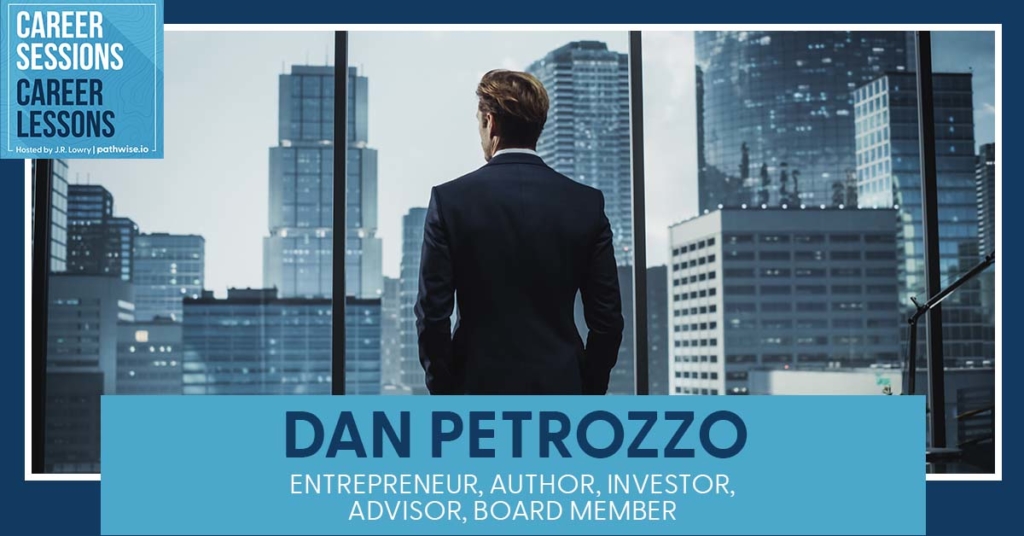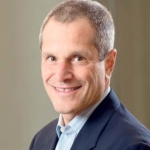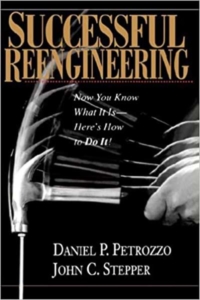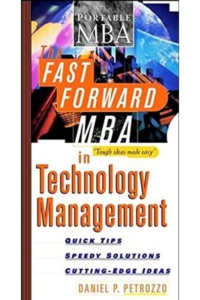
Dan Petrozzo – Entrepreneur, Author, Investor, Advisor, Board Member
Veering away from formal education to pursue a particular career direction is a pretty risky move. But with the right motivation and a clear purpose, you can ultimately achieve your own idea of success. Dan Petrozzo postponed finishing college to work at Bell Labs and write a book when he was 20 years old, and these decisions set the course for his many achievements since that time. Sitting down with J.R. Lowry, he looks back on his long journey of working in financial services, starting a staffing agency, building and selling a cloud computing company, all the way to becoming a partner with Oak HC/FT. Dan shares valuable insights about the pitfalls of running a huge-scale program, the strengths and weaknesses of being an entrepreneur, and the technologies that excite him the most.
—
Watch the episode here
Listen to the podcast here
Dan Petrozzo – Entrepreneur, Author, Investor, Advisor, Board Member
On How Postponing College To Work At Bell Labs And Writing A Book In His 20s Set His Career Direction
This is Career Sessions, Career Lessons, which is brought to you by PathWise.io. PathWise is dedicated to helping you live the career you deserve with a mix of courses, coaching, community and content. Basic membership is free, so visit PathWise.io and join now.
In this episode, my guest is Dan Petrozzo, who I met when Dan joined Fidelity as Chief Information Officer back in 2008. Dan is an investor, advisor and board member working as a partner with Oak HC/FT, a venture capital and private equity firm investing in healthcare and FinTech.
Dan started his career somewhat non-traditionally in the middle of his college experience, working at Bell-Labs. He later moved into financial services and spent time at Deutsche Bank and at Morgan Stanley prior to joining Fidelity, where we met. After leaving Fidelity, Dan spent time leading technology in Goldman Sachs’ asset management division and founded a cloud computing company called Verilume that was eventually sold to Intralinks.
Dan has largely been with Oak HC/FT since then and has served on a number of boards spanning a range of tech-centric businesses. He is the author of The Fast Forward MBA in Technology Management and a co-author of Successful Reengineering, both of which he wrote in his early career days. He is a past member of the board of trustees of St. Luke’s Hospital in Bethlehem, Pennsylvania, where he has strong roots in the local community. Dan is a graduate of Moravian University, where he earned a dual degree in Political Science and Information Systems. He also earned a Law degree at Seton Hall. He splits his time between Pennsylvania and New York.
Dan, welcome. Good to have you.
Nice to see you again.
You too. I don’t know much about your early days. Where did you grow up?
I grew up mostly in the Western part of New Jersey bordering Pennsylvania, the northwest corner of New Jersey. You’ve probably heard the song Allentown by Billy Joel. My residence was twenty minutes from that town and that city. The town I grew up in had the same features that were being discussed by Billy Joel in that song.
Steel and coal mines and all of that thing.
It was the end of an era, like the entire era. We had Ingersoll Rand, Mack Trucks, Bethlehem Steel and all these companies that either got much smaller or disappeared. Tough times.
My daughter went to school at Franklin and Marshall, so when she was there, we were back and forth to, I’ll say, that part of Pennsylvania. There’s an amusement park in Allentown, too, or near Allentown that my son has made me go to on at least one occasion.
That was 1/10 of the size [it is now].
In your childhood days?
In my childhood. There was one wooden roller coaster that may still be there. I’m not even sure. I haven’t been there in a number of years.
Probably. They keep them, and then they upgrade them. What was your first paid job?
I did everything when I was a kid. I was fairly entrepreneurial. I remember when I was maybe in third grade, that timeframe, selling Christmas cards door to door and mowing lawns and delivering newspapers and anything to get money, and progressing from there to work in places like truck stops and pizza places and on and on.
I mowed lawns. If I ever sold things door to door, it was generally to raise money for Boy Scouts or some school thing or things like that. How did you decide to go to Moravian and why Political Science and Information Systems are a combination?
I know that this session is about careers, and it’ll be a good lesson for anyone who reads/watches how not to do things. Maybe you can get to a good spot, but it’s not the route one would take. I was a very good student in high school and pretty serious about doing well. Not a big studier, but pretty smart and able to find my way and to get pretty decent grades. No one in my family had graduated college.
No one was focused on, “You needed to go to college to do something with your life or anything along those lines.” I was out there on my own. Part of being out there on my own was taking the SATs at the time. No one told me you needed to relearn what you learned in your freshman and sophomore years in high school to prepare for the SATs. I was taking calculus or calculus II and that’s not what the SATs are about. Long story short, my grades were great. My SAT scores sucked. I was disillusioned. I wanted to go to Lehigh and didn’t get into Lehigh.

Dan Petrozzo: When taking the SATs, you need to relearn everything from your freshman and sophomore years back in high school.
I was a cross-country runner. The coach at Moravian called me and said, “Come to Moravian,” and at the last minute I ended up at Moravian. When I got there, at some point in my life, I was thinking about becoming a lawyer. The on-ramp to legal back in the early ‘80s was Political Science and that’s how it started. What happened after that was I ended up getting a summer job after my sophomore year in college. I left college for two years. When I went back and decided maybe I should get my degree, that’s where I tacked on the stuff I had already been working on and technology as a second dual degree or whatever it was at the time.
What were you doing in that break?
It wasn’t a break.
In the break from school, I mean.
It was a break from school, but it was a life lesson. I had a summer job, and what happened at the summer job was right after AT&T broke up. The system broke up and we were working to try to figure out which customers were AT&T’s customers and which customers belonged to the [regional Bell companies]. This was a team, and I’ll show my age, but we were reading microfiche, making phone calls. Like say, we would call up Lowry Electric in Framingham, Mass and ask if it’s the same company as Lowry Electric in some other part of the country. The net of it is I was doing this for a while. It was silly.
I asked the supervisor and I said, “We’re pretty unproductive here, and I think that if I can talk to the people that program to computers that spit out this microfiche, we can do things better.” That led to them saying, “That’s pretty smart. Can you stay? Why go back to school? Why don’t you just stay?” I can’t remember what they were paying me, but it was better than sitting in class, which I was bored with.
I stayed on, then the entrepreneur kicked in and what I saw was happening was that that area was hiring a bunch of contractors, both technical people and other types. It started basically as a staffing agency. By the time I was nineteen, I think I had 35 or so people. I was off to the races. I built that business up before I finished college.
What did you end up doing with it when you went back to school?
What happened was I ended up using that first assignment to convince some people at Bell Labs to hire me as a contractor. I didn’t realize that it was a job that nobody wanted. I thought I was being clever because I didn’t have the appropriate skills. I found myself seven stories underground someplace in Northern Virginia, working on something for the Defense Department and never seeing the light of day for maybe 6 to 8 months or something along those lines.
I thought I was pretty smart getting the job, but it turns out, I was a sucker, although I learned everything I needed to know about computers within that short period of time. What happened was, running a staffing group wasn’t very inspiring. As things fell off, I reduced the people billing and finally decided that I would go get a real job many years later. [At that point] I was billing and maybe one or two other people. [The business] never was sold or put out of business, but it went down. I went to school at night when I came back. I didn’t go during the day. I did all of my education other than [the first] two years in the evening.
Including your Seton Hall time when you went to law school?
Yes, that was all in the evening.
What were you doing work-wise when you were going to school at night?
The first time?
You had the Bell Labs experience, then what came after that?
I finished my undergrad then I started going to law school. I was still doing work at Bell Labs when I started. Before I finished law school, that’s when I transitioned to Morgan Stanley. Maybe right towards the end of my law school at the time.
At that point, presumably, you decided you weren’t interested in being a lawyer.
When I went there, I never had the intention of practicing. I know I said I wanted to be a lawyer when I was a kid, but I had no desire to be a practicing attorney. I had some momentum while I was still going to school. I [thought I] should go to grad school right away versus waiting another eight years.
Did you choose law school still?
At the time, I was pretty deep in computers. The idea of going for like a Master’s in computer science didn’t make a lot of sense. I was in business. I had run my own businesses and that didn’t seem very inspiring. I took some practice GMAT exams. The thing about law school, which was great, is that it’s a different way to think about things, which was awesome. It helps me to this day.
A lot of people end up going to law school and don’t ever practice. Maybe they practice for a bit of time and then change, but it gives you a way of thinking analytically and critically about something.
Honestly, both of us have worked in regulated industries. When you’re a regulated industry, there are laws and there are lawyers and compliance people and all these people that you need to communicate with. It’s a lot easier to communicate with them when you are able to understand what it is they are trying to accomplish and do.
It’s very true. I’ve certainly spent a lot of time, as you said, we’ve both worked in regulated industries. There are certain points in my life where I felt like I might as well have been sitting in a law department. I was spending so much time on legal issues. Sometimes that happens. Now, you wrote a couple of books back in the ‘90s. You wrote a book called Successful Reengineering with John Stopper. How did you meet John? How did the book come about?
One of the things we started doing when I was at Bell Labs was we were doing process redesign. This was right around when Michael Hammer was doing all the reengineering stuff. Since we were working in a place like Bell Labs, it was a little bit more scientific, what we were doing. We were using advanced statistical techniques and modeling software to redesign order management processes as part of AT&T.
It was effective what we were doing. It made a lot of progress and, and changed things. It was pretty pioneering. John and I and this guy, who was older than us, Jim Pinnell, put together a paper that we presented at the American Society of Quality Control back in 1991 or something like that. Being never satisfied with anything, my objective when we went to this conference was, “I want to get a book contract,” because I felt that if we published something, we could start consulting.
I didn’t know where it was going to lead necessarily, but it would increase our brand value and open up opportunities. What happened was I went out there and I met with a bunch of publishers. Basically, I convinced one of them to give us a contract without having anything written other than this paper that we had put together. Jim was the smartest of the three of us, like the real intellectual.
He dropped out. He didn’t want any part of it. John and I decided to put it together. Oddly enough, that was the beginning of everything else. John went to Columbia. A woman that worked at Columbia as a professor or something like that, was doing either consulting work or HR leadership training or something for Morgan Stanley, working directly for the Chief Information Officer at the time. He ended up with a copy of the manuscript before it comes out and says to the woman, since John went to Columbia, “I want to hire this guy.”
He hired John to go to leave Bell Labs and go to Morgan Stanley, and a bunch of us all ended up there from that same unit, if you will, that were in Bell Labs. Everyone transitioned at that point from telecommunications to finance. The book was the stalking horse if you will. It didn’t sell that many copies, but it generated a fair amount of revenue for the overall team over the years.
As you say, it got you set on your way and got you into financial services, and you were off from there.
As I said, I didn’t know where it was going to end up, but that’s where it ended up.
What about the other one, The Fast Forward MBA in Technology Management?
The second one was a favor to my editor. She moved from wherever she was to John Wiley and they had this series of those. I’m sure you’ve seen they had these Fast Forward MBA books on all kinds of topics back in, whenever that was, the late ‘90s. She basically strong-armed me to do it. We’re certainly not novelists or anything, but the first one was like a pursuit of intellectualism to some degree and expression. The second one was more of a research report. It was some tips and tricks here and there, but a lot of, “Here’s what you should do,” backed up by somebody doing something and some research. That’s how that second one came about.
Interesting. You were at Morgan Stanley and also at Deutsche. What were the things that you guys were doing in the technology space at the time?
When I got to Morgan Stanley, I ended up pretty quickly thereafter in like an operating officer-type person working for one of the senior MDs there. A bunch of things happened and I ended up being responsible for distributed systems at Morgan Stanley. What distributed systems meant was all the non-mainframe technology that supported servers and databases and those types of things. This was the mid-‘90s. At the time, not many companies had thousands of computers that were networked globally. It was finance that was who did it.
There was no infrastructure that you could go buy. We essentially built our own cloud computing platform. Putting it together with software we wrote, hardware we bought, and interesting things like distributed file systems and the like. The objective for us was that we had a lot of developers writing software for the various trading desks. Those developers needed to be productive and needed to do things like be able to make it so that when they released a binary in the production, that happened globally within seconds.

Dan Petrozzo: During the 90s, not many companies had thousands of networked computers globally. If you needed a cloud computing platform, you had to put together your own software and hardware.
We built stuff that made it so that people could do what people take for granted now. It was fun because it was very immature. The technologies were very immature and it was very business focused. Although it was infrastructure, it was very clear why you were doing what you were doing. It was very exciting at the time.
You and I met at Fidelity, which was around the time of the crisis. I think you joined a couple of months before. Did you know before you came in that this corporate transformation program was going to be a big part of your role within the context more broadly of being Chief Information Officer?
Yes. What happened was that I ended up agreeing to go to Fidelity in May 2008. They had first called maybe sometime in 2007. I wasn’t ready to make a move at that time. A bunch of additional bad things started happening at Morgan Stanley. I went and met with the team [at Fidelity]. This was all with the idea that we needed to make things run more business-like at Fidelity.
It was stuff I knew about. I was trained in some of this because, when I went back to Morgan Stanley, I went back to the wealth management/retail part of the business. It was a disaster. Technologically business-wise, it needed a heavy lift and change. In the 2002 through 2006 timeframe, I got pretty good training for what it takes to change things at scale.
Was the Fidelity experience the biggest change program that you’ve been part of over the years?
I’d say by actual measurement of change created. The work that I did at Morgan Stanley was probably more significant in terms of what was accomplished. [In terms of] money spent on a change program, I think the Fidelity effort was much larger. [In terms of] the coordinated scope of what was on the table to change it, Fidelity was much larger. When I came back to Morgan Stanley and we were doing similar things. We never called it anything.
You just did it.
People did different things in different parts of the business. Technology was doing one thing, Operations was doing another thing, and the front office was doing its thing. It was pretty urgent at the time. We had a lot of regulatory problems. The business was losing money. There was a lot to do. In Fidelity, even though there was some trouble in 2008, I think it was relatively insulated overall. There was a little bit of a scare with the money markets, but outside of that, I’d say that business mostly benefited from the fact that it wasn’t part of the New York financial system.
Having been through that effort, having been through the Morgan Stanley effort, what did you take away in terms of what it takes to run a successful big-scale, large-scale change program and what the pitfalls are?
The hardest problem, and it speaks to even the day-to-day at companies no matter what you’re trying to do, is making sure that everyone’s incented and aligned on the same thing. It’s hard to get that right. I’ve never been part of an experience where people got it right. Certainly, at Fidelity, here was a top-down commitment to do stuff, but a lot of folks felt it was optional. You had a family dynamic in terms of who owned a company. It made some of these things challenging and difficult. There, you had a whole other special thing related to how compensation was created over a number of years.
Trying to do things over short periods when people were paid over long periods, there were all kinds of impedances. Getting people, getting executives, and this is one of the reasons why a lot of private equity works, because when they buy a company, they load up the executive team, and everyone gets paid if the thing works. They don’t get paid if it doesn’t work. They know their objective is to either take the thing public or resell it.
From the get-go, whoever signs up and gets in the boat is like, they’re all at least incented to row in the same direction. Whereas in existing companies that aren’t going through an M&A transaction, you’ve got all these lingering things around and deals that were made with people.
Sometimes it’s a culture where you have too many new people. Sometimes it’s a culture where you have too many people that existed before. It’s very hard, which is why you’re almost better off not naming things and doing things. If you do things and you say, “This year, we’re going to do X, Y, and Z and it’s going to improve our top and bottom line the following way or we’re restructuring because we think things are too disorganized or wasting money”, just do it. Don’t call it anything.
I lean toward that style as well in terms of how I manage myself. At the same time, a lot of people like putting the programs around it and creating the buzz. It’s like the perception and reality thing. Sometimes that can work for you if you’re good at marketing. Sometimes it works against you if you spend too much time on that and don’t have the substance to back it up.
Change is very difficult when you don’t have major reasons to do it.
You could argue we did at Fidelity to a degree. They were certainly feeling the pinch, but they were never going to fail. They were never anywhere close to that point like the big Wall Street banks were. That burning platform, so to speak, was not there for that transformation program.
I would agree with that. I think that’s the case.
I know you spent time at Goldman and you went out and branched out on your own. How did the cloud computing idea come about?
I left Fidelity. My mom was ill. [Fidelity’s] president was leaving, and he was the reason I wanted to be there. It was another time, but like the book and like other things, I had no plan. It was time to leave. I didn’t have anything to do and I just left. I got a call from Goldman and a partner role there had opened up, which up until I was hired, it [had been] probably three decades or so since they [had] hired a lateral non-revenue producing partner.
Now they do more regularly, but they hadn’t done it for decades. Goldman Sachs is a great business and a great company and has great people. I was never a big resume builder per se, but certainly, there there’s [only] a finite number of Goldman partners. I hit the bid and figured out how to get the job, which was harder than doing the job, as it turns out. I knew I was only going to stay 3 to 5 years. I didn’t know what I was going to do. I had no plan.
During the time, I got excited about starting a company again. I had done a venture-backed startup back when I left Morgan Stanley the first time and felt that would be a good way to end things, if you will. That’s where it started. I started a business with a person who worked with me at Morgan Stanley the first time, and we did our first startup together.
He was at EMC after that. We had this idea, which still hasn’t been implemented, but we were going to essentially create a public cloud out of private infrastructure. Essentially, making it so that all these private companies that had invested a serious amount of money in data centers and servers and compute could pull together the resources in a way that they could spike up and down with workload, share [it] with one another, do that type of stuff like a [cloud] co-op.
What I messed up, though – it was obviously a big idea – was the difficulty of getting company A to basically lend its assets out for company B to use with security and all that other stuff. It was certainly a big idea. If we cracked it, it would be great. Unfortunately, because I was still jaded by my first experience in raising capital and dealing with investors, we decided to slow roll it.
We put a bunch of our own money in it and we took a little bit of money from some people we liked, and that was a bad idea because we under-capitalized the business for the idea. Some businesses, you can bootstrap and get going, but here, you needed a lot of money to build technology and a lot of time to be able to get people on board with the idea. You needed to market. You needed to do a whole bunch of things that required capital that we didn’t have the capital to do.
In cloud computing, you need a lot of money to build technology. You must have a bunch of things that require capital to get people on board with the idea. Share on XWe’d had a successful exit before, and if I had been smart about it, I could have raised $50 million on a napkin to do anything I wanted to do at the time, and I screwed that up. After we muddled along for a couple of years, we didn’t have any contracts for this core business and had to shift what we were doing and turn it into more of an enterprise software business. I realized that the probability of this turning into a multibillion-dollar company was pretty low, and we should sell it, which is what we did.
You went to Oak, where you are now.
What happened was we sold our business to Intralinks. and then I worked on the management team there for a year, and we sold Intralinks.
To SS&C, right?
Before SS&C. The first deal was to a company called Synchronous, which was a publicly traded company. After that trade was made, the plan all along was for me to transition out. I stayed on for a little bit as a consultant and things got crazy and then Intralinks ended up being sold separately to private equity and then to SS&C. Now it’s safely tucked away inside of SS&C. As that was unwinding, I got called by a recruiter.
Oak HC/FT had spun out of the old Oak Investment Partners. They had raised their second fund and didn’t have any expertise in asset and wealth management business/tech. We’re looking for someone who could help, basically. That’s how I got there. Over time, I did a few investments. It looked like I was pretty good at it and I decided to become an investor.
You do a mix of investing and advisory. You’ve been on a huge number of boards. How’s that mix work for you?
It’s fun. I like investing because the art of pick picking the right asset is both challenging, and it’s also a very competitive business. If you’re onto something, usually someone else is onto it as well. That part is fun. I get the most fun working with the entrepreneurs. Our investments usually come with a board seat. I do some board work outside of my duties at Oak as an independent board member.
Being in the thick of it with entrepreneurs trying to build businesses, it’s a bit like grandparenting. I’m not a grandparent, but you come in, you don’t own the problem because you don’t. You have to be comfortable with that. Sometimes you have to be a teacher. Sometimes you have to be a psychologist. Sometimes you need to get out of the way. That’s all cool. It’s fun. It’s not real work. It’s work but not real work. The stress of operations is not my challenge anymore. That feels good.
When working with entrepreneurs, you sometimes need to go out of your way to be a teacher or a psychologist. Share on XYou get to see a lot of different technologies. What are the ones that excite you the most?
I’m excited by the same things that have always excited me. It’s a continuum. I’ve always been excited about the use of data to either create and drive businesses or change operations or something like that. That’s evolved over time, and it’s a problem that evolves and doesn’t ever get solved. It gets more complicated. I don’t like machine learning for the sake of machine learning. Years ago, we were still telling people to delete information.
It was because storage costs money.
Yes, storage was expensive. It wasn’t that long ago. A lot of the theoretical statistics that exist, these models have existed for a very long time, but the combination of the data, the dataset size, along with the compute to be able to do something to manipulate it – that’s a fairly new phenomenon. We’re in the early innings of, like, how you use large data sets to predict things. How to use large data sets to serve customers better. Whatever it may be. We’re barely out of the gate. Things that use these techniques on data sets in smart ways where it’s not a science project. Those things excite me. I get excited by the same thing that excited me when I wrote the first book, which is automation.
It’s still in companies. It’s a very analog world, front to back. Most people don’t know what happens after something occurs with a customer order or something like that, but still lots of departments, lots of handoffs, and clunky systems. It’s in many ways worse because it’s like semi-automated in a very stove-type way. That’s what makes SaaS work.

Dan Petrozzo: Most of the time, the customer order process is still clunky and semi-automated in a very stove-type way. That’s how SaaS solves discrete business problems and stitches different processes together.
That’s what makes companies work that are solving very discrete business process problems or helping stitch together business process. My fascination around technology haven’t changed that much over a very long period of time. The good news is the core guts of this stuff haven’t changed in the many years I’ve been around it. That’s good. As long as I stay somewhat current, I could probably at least work another 30 or 40 years.
Do you want to do that, though?
Yes, I do.
Good enough. That means you’re having fun doing what you’re doing. Having been an entrepreneur, and you work with a lot of entrepreneurs now, what are the things that you see in them? As you said earlier, you can guide, but you can’t tell. You certainly aren’t the one doing it. What do you see them doing right? What do you see them doing wrong?
Every one of these situations is very different. When you’re in a young company and you don’t have a product yet or you barely have a product, you maybe get your first sales of a product. The energy that the person has to have to get it to that phase, it requires them to sprint hard. Everybody does everything. There is no product. There’s no nothing. It’s very much a survival game for, I’d say for, most companies or until they’re a Series C company. They’re very much in survival mode and most of the time, things are going wrong. They’re not going right.
You don’t get the customer. You don’t get the contract. The contract takes too long to get. The product doesn’t work the way you thought it was going to. You’re presented with problem after problem. That’s the emotional state. When I invest as part of the venture fund, that’s the time we’re entering. They’ve figured some of these things out, but they’re coming from this other place. The biggest mistake I see a lot of companies make, which is part of the challenge that you’re seeing with the current market conditions, is it’s almost like a wrestler mentality. They’re cutting weight constantly and once they don’t have to make weight anymore, then they get fat.
They get enough capital to breathe and then they don’t focus enough on the operational discipline of the growth and they spend too much money. Maybe not too much money relative to the opportunity. Maybe not too much money relative to anything. But they’re not disciplined in their growth when they’re successful. I attribute a lot of that to the pain they had gone through telling people, “No, you can’t hire anyone. No, we can’t have a holiday party. We can’t do any of these things.” I think that, at least for my companies, I tend to end up getting involved with companies that have those types of founders too.
The biggest mistake companies make is embracing a wrestler's mentality. They're cutting weight constantly and once they don't have to make weight anymore, then they get fat. They get enough capital to breathe, but don't focus enough on the operation… Share on XThey’re not like the Silicon Valley [start-ups], with the Y Combinators, where a lot of money is thrown at them early. Those have a different set of issues but I don’t get exposed to a lot of those issues. I think I see people take their eyes off the ball a little bit. The one thing that the great entrepreneurs do right is adapt if they’re presented with challenges and change. It’s their ability to switch and go. They’re not burdened with a heavy risk management genetic profile or it hasn’t been beaten into them yet. They’re able to not get set on something. If it’s not working, [they can] change it immediately. Clearly, there is a direct relationship with experience. The less experience somebody has, the better they tend to be in doing that.
Great entrepreneurs adapt. They easily switch and go if they're presented with challenges and change. If something is not working, they change it immediately. Share on XTheir mindset is not grounded.
They’re not worried. They’ve never been exposed to the bad consequences of making a terrible decision or being told by their boss not to make a decision or some other thing, so they’re able to do it. Over time, the thing with all these, the teams evolve. They have to hire the right people at the right times. That’s all the stuff that I get to watch, so that they can get the most out of the opportunity.
I tell the good ones and the ones who have good companies all the time, like, “You may never have another opportunity like this in your life.” You can’t think about it in terms of, “If I make enough money to retire, I’m good,” because you’re building something here and this may be it. You think you’re going to be 32, 33 years old, solve a thing, then sit on a beach for the rest of your life? It probably isn’t going to happen. All good stuff, though.
More generally, your career, like a lot of people’s careers, like almost everybody’s careers, is meandering and things come up. You’re mostly opportunistic and sometimes you have clear intent and that factors in sometimes. What advice would you give to people who are reading or watching?
You’re on a journey. You’re probably going to work for 40 years or something like that. You might as well enjoy it. Feel like you’re generating impact in whatever you’re doing. It’s trite, but if you’re focused on your career, whatever that’s supposed to mean, you’re probably not spending enough time figuring out how to generate the impact that you can make. Usually, the opportunities that occur are a result of something you just did, not something you planned.
If you do things and you do things as best you can, you hopefully do things better than other people, and you do more things than other people, frankly. The opportunities will present themselves. People worry too much about like, “Should I take this job? What’s going to happen if the job doesn’t work out?” These types of things, none of that matters. Plan less, do more, and try to have some fun. You’ll feel better about it, frankly.
Getting a promotion because you sat in your seat and did what you needed to do and thought about that promotion for three years for before it happened [and then think,] “How am I going to get the next one?” That doesn’t seem like that much fun to me. If you’re working at a company, whatever company you worked in, if you’re not an entrepreneur. They’re hiring you to help them make more money or to make it so the place doesn’t blow up. Whatever it is that they hired you to do, do more of that and you’ll be fine. It will happen for you.
One last question, [seeing multiple guitars in the background], what music do you like to play?
It’s rock and punk. Stuff that’s not too complicated. I’m never going to be like a virtuoso musician. I didn’t pick up the base guitar until I worked at Fidelity. I started playing in 2009. I was already way past what would’ve been my prime as a guitar player.
Your teenage years. Finger dexterity was probably a little bit harder to come by at that point.
Trust me, it is an instrument that, unless you’re gifted, it’s very physical. Unless you’re somehow gifted with it, you have to work at it. My family heard a lot of bad guitar playing for a couple of years.
Dad’s at it again.
I call myself serviceable now.
Serviceable is okay. You’re in better shape than I am on playing any musical instrument at this point in my life.
It’s never too late.
Tell me about it. We will stop there, Dan. I appreciate this. It’s been fun catching up.
It’s been fun catching up, and I hope to see you stateside.
I’d like to thank Dan for joining me and sharing his entrepreneurial career journey and the learnings he’s had along the way. If you’re ready to take control of your career, visit PathWise.io. If you’d like more regular career insights, you can become a PathWise Member. Basic Membership is free. You can also sign up on the website for the PathWise newsletter and follow PathWise on LinkedIn, Twitter and Facebook. Thanks.
Important Links
- Fidelity
- Oak HC/FT
- The Fast Forward MBA in Technology Management
- Successful Reengineering
- LinkedIn – PathWise
- Twitter – PathWise
- Facebook – PathWise
About Dan Petrozzo

Dan started his career doing engineering work at Bell Labs in the 1980s. He moved on to financial services, joining Morgan Stanley in the 1990s. He then joined the founding team of a venture-backed startup called StorageApps that was sold to HP in 2001. He was subsequently a managing director at Deutsche Bank and Chief Information Officer and Head of Infrastructure at Morgan Stanley prior to joining Fidelity Investments as Chief Information Officer in 2008.
After leaving Fidelity, Dan spent time leading technology in Goldman Sachs’ Asset Management division. He then co founded a cloud computing company called Verilume that was eventually sold to Intralinks, where he worked for a period after the sale.
He has since been with Oak HC/FT and has served on a number of boards, spanning a range of tech-centric businesses. Dan is the author of The Fast Forward MBA in Technology Management and a co-author of Successful Re-Engineering. He is also a past member of the Board of Trustees of St. Luke’s Hospital in Bethlehem, PA. He is a graduate of Moravian University, where he earned a dual degree in Political Science and Information Systems. He also earned a law degree at Seton Hall. He splits his time between Eastern Pennsylvania and New York.

